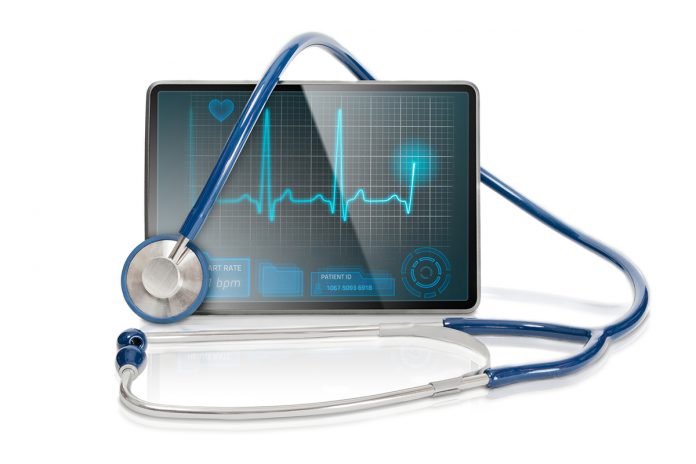Proactive healthcare is made possible through passive monitoring, which detects very early signs of health problems
The traditional reactive healthcare model is well-known. Typically, patients initiate a doctor’s visit when they feel sick (sometimes very sick). Although many people seek health check-ups periodically, often health changes are not caught until they become serious health problems. This particularly affects older adults with chronic health conditions. With delayed treatment, many health problems escalate, resulting in hospitalisations. The result is that older adults and others with chronic health conditions decline, losing functionality, which in turn may lead to a loss of independence and a move to a skilled nursing facility.
Proactive healthcare using new vital signs
For over 10 years, the Center for Eldercare and Rehabilitation Technology at the University of Missouri has been investigating technology solutions that facilitate proactive healthcare, especially targeting our ageing population. We have developed an in-home sensor system that functions as a clinical decision support system for recognising early signs of illness and functional decline. The system learns a personalised model of each resident in the home and sends health alerts to clinical care coordinators when the pattern deviates, indicating a possible change in health status1. Clinicians receiving the health alerts are trained to interpret the alerts with the help of an interactive web interface for viewing information extracted from the sensors.
The system of non-wearable environment sensors includes a bed sensor that captures heart rate, respiration rate, bed restlessness, and sleep patterns, while positioned discretely under the mattress2. For couples, a sensor is positioned under each side of the bed. In-home gait analysis is accomplished with a depth sensor that extracts three-dimensional silhouettes of individuals moving through the home. Independent models of walking speed, stride time, and stride length are learnt for each resident of the home3. Passive infrared motion sensors are positioned around the home to capture room-specific motion, as well as an overall pattern of motion activity (activity density)4.
For each of these sensing systems, advanced machine learning approaches are utilised to identify patterns that are tracked over time to establish typical patterns for each individual and recognise when the pattern deviates. The system of sensors and automated health alerts has been tested in several senior housing sites in the U.S. for over 5 years. Recent work is also testing the system in private homes. Examples of health changes detected automatically include urinary tract infections, respiratory infections, increasing congestive heart failure, pain post hospitalisation, depression, delirium, and low blood sugar. Studies show that the system of sensors and health alerts enables seniors to stay 1.7 years longer in independent housing, compared to a control group that did not have the technology5. The key is that early treatment can be offered due to very early detection of health changes, before the health condition escalates. The effect on the older adults is improved functional ability, thereby changing the trajectory of aging.
A vision for the future
Although the in-home sensor system has been shown to work well for clinical decision support, our vision for the future extends its use in several directions. First, we envision its integration into the healthcare ecosystem that includes primary care clinics, hospitals, and electronic health records (EHRs). Health-relevant sensor data from the home should be used to inform diagnosis and treatments in clinics and hospitals. Similarly, in-home sensor data can provide useful monitoring when the patient returns home from a hospitalisation, to help track recuperation. EHRs can aid in proactively monitoring transitions into and out of the hospital. Existing EHRs should be linked to sensor databases, to provide context in the automated analysis of the sensor data. Clinicians should also be able to view new vital signs from the sensor data using electronic interfaces.
Secondly, the data from this integrated system should be accessible for data mining. A large scale implementation would facilitate the learning of new population-based models that can be tailored to individuals, especially pertinent for a variety of chronic health conditions. These models would help in the automated interpretation of tracked health trajectories to better inform health alerts. For example, imagine a system that recognises the specific trajectories of urinary tract infections or heart failure complications. We envision the existing clinical decision support as an extended system. Currently, it prompts the care coordinator to take a closer look at an individual. An extended system would provide suggestions for possible health problems and what to do next. A validated system of this sophistication would allow its use more broadly with clinicians who may have limited experience or training.
Third, our vision extends the use to consumers and their informal caregivers for improved self-management of chronic health conditions. This especially opens significant challenges in how to convey the information for accurate and meaningful interpretation.
Our interdisciplinary team has begun to work on parts of this vision. We have developed a prototype system for linking the sensor data with an EHR, for the purpose of improving the automated health alerts by bringing in contextual information on medications and health status. The linkage also facilitates automated data mining to learn more detailed health trajectories related to specific health changes. We have begun to derive models of health trajectories for common ailments challenging older adults. Finally, we are also investigating methods to summarise the large volume of data into easy-to-interpret linguistic forms6. These new developments move closer to our vision and offer the potential for significant impact in maintaining health and well-being.
References
1 Skubic M, Guevara RD & Rantz M. (2015). Automated Health Alerts Using In-Home Sensor Data for Embedded Health Assessment. IEEE J of Trans Eng in Health and Medicine, 3:1-11.
2 Rosales L, Su B-Y, Skubic M, & Ho KC. (2017). Heart Rate Monitoring Using Hydraulic Bed Sensor Ballistocardiogram. J of Ambient Intelligence and Smart Environments, 9:193-207.
3 Stone E & Skubic M. (2013). Unobtrusive, Continuous, In-Home Gait Measurement Using the Microsoft Kinect. IEEE Trans on Biomed Eng, 60(10):2925-2932.
4 Wang S, Skubic M & Zhu Y (2012). Activity Density Map Visualization and Dis-similarity Comparison for Eldercare Monitoring. IEEE J of Biomed and Health Informatics, 16(4):607-614.
5 Rantz M, Lane K, Phillips LJ, et al. (2015). Enhanced RN Care Coordination with Sensor Technology: Impact on Length of Stay and Cost in Aging in Place Housing. Nursing Outlook, 63:650-655.
6 Jain A & Keller JM. (2015). Textual Summarization of Events Leading to Health Alerts. Proc, IEEE EMBC Conf, pp 7634-7637.
Co-authors:
James M. Keller (Curator’s Professor, Electrical Engineering and Computer Science)
Mihail Popescu (Associate Professor, Health Management and Informatics)
Marilyn Rantz (Curator’s Professor, Sinclair School of Nursing)
Marjorie Skubic
Professor, Electrical Engineering and Computer Science
Director, Center for Eldercare and Rehabilitation Technology
University of Missouri
skubicm@missouri.edu
Please note: this is a commercial profile











